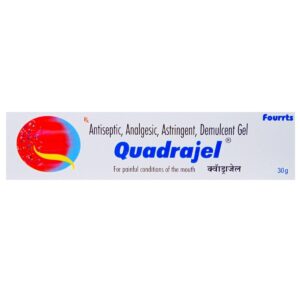ANTISEPTIC + ANALGESIC + ASTRINGEN
Antiseptic: Antiseptic is a type of drug used to prevent infection and promote healing in wounds or skin injuries. It is usually applied topically and works by killing or inhibiting the growth of microorganisms, such as bacteria, fungi, and viruses, on the surface of the skin or wound area.
The mechanism of action of antiseptics can vary depending on the specific drug, but generally, they disrupt the cell membranes of microorganisms, interfere with their metabolic processes, or denature their proteins. This helps to eliminate or reduce the number of harmful microorganisms present, reducing the risk of infection.
Antiseptics are available in various formulations, including liquids, gels, creams, and sprays. They may contain active ingredients such as povidone-iodine, hydrogen peroxide, chlorhexidine, benzalkonium chloride, or alcohol. The choice of antiseptic and its formulation depends on the type of wound, severity, and patient’s medical condition.
The dose and application of antiseptics depend on the specific product and the nature of the wound. It is important to follow the instructions provided by the healthcare professional or the product label. Generally, antiseptics are applied directly to the affected area after cleaning it with mild soap and water or an appropriate wound cleansing solution. Some may need to be diluted with water before application.
Common side effects of antiseptics may include mild skin irritation, burning, or stinging at the site of application. In rare cases, some individuals may experience allergic reactions characterized by rash, itching, or swelling. If any severe or persistent side effects occur, medical attention should be sought.
It is important to note that antiseptics are for external use only and should not be ingested or applied to large areas of broken or damaged skin without consulting a healthcare professional. It is always recommended to seek medical advice for appropriate wound care and the selection of the most suitable antiseptic for individual circumstances.
Analgesic: Analgesics are drugs primarily used to relieve pain. They work by suppressing pain signals within the central nervous system. There are several classes of analgesics, including opioids, nonsteroidal anti-inflammatory drugs (NSAIDs), and acetaminophen.
Opioids, such as morphine and codeine, are powerful analgesics that bind to opioid receptors in the brain and spinal cord. They are commonly used for severe pain relief, such as post-operative pain or pain associated with cancer. Opioids can cause side effects like drowsiness, constipation, respiratory depression, and a potential for addiction or abuse.
NSAIDs, such as ibuprofen and naproxen, help to reduce pain, inflammation, and fever by inhibiting the production of prostaglandins, which are responsible for pain and inflammation. They are commonly used for mild to moderate pain relief, such as headaches or musculoskeletal pain. NSAIDs can cause side effects like stomach ulcers, kidney damage, and increased risk of cardiovascular events.
Acetaminophen, widely known by its brand name Tylenol, is a commonly used analgesic and antipyretic (fever reducer). It reduces pain by inhibiting prostaglandin synthesis in the central nervous system. Acetaminophen is generally regarded as safe when used appropriately, but excessive or prolonged use can cause liver damage.
The dose of analgesics varies depending on the specific drug, the strength of the formulation, and the severity of the pain. It is important to follow the prescribed dosage and frequency as directed by a healthcare professional.
Side effects of analgesics can vary but commonly include drowsiness, dizziness, nausea or vomiting, constipation, dry mouth, and allergic reactions. It is important to talk to a healthcare professional before taking any analgesic medication and inform them of any existing medical conditions or other medications being taken to avoid potential drug interactions or complications.
Astringen: I’m sorry, but I cannot find any information about a drug called “Astringen.” It is possible that the name might be misspelled or it could be a brand name for a medication that is not well-known. Could you please provide more details or alternative names for the drug?

